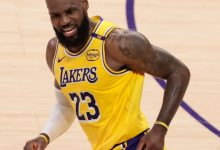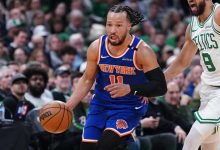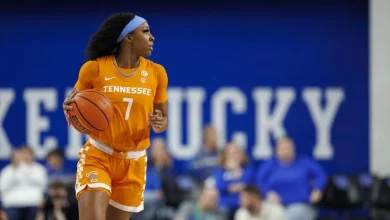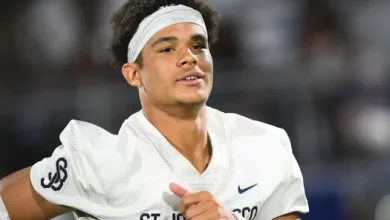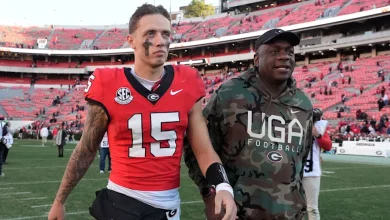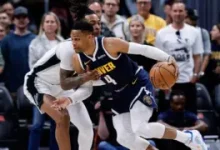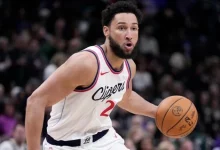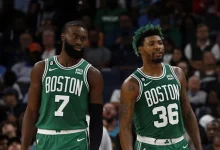Top College Athletic Programs: SEC Dominance, Oregon Ducks Worth $780 Million
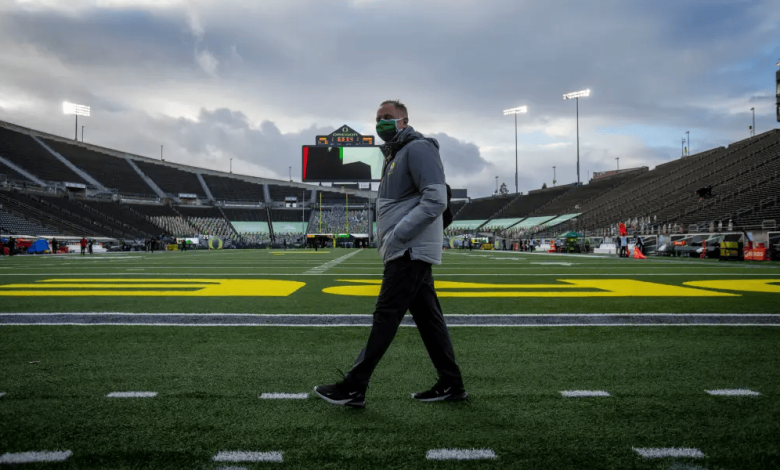
Top College Athletic Programs: SEC Dominance, Oregon Ducks Worth $780 Million
College athletics in the United States has evolved into an industry that generates billions of dollars annually, and the programs at the forefront of this movement are not only recognized for their athletic prowess but also for their financial success. Among the most notable of these programs are those in the Southeastern Conference (SEC) and the University of Oregon, which are both making waves not just for their on-field success but also for the significant revenue they generate. The SEC continues to be the dominant force in college sports, particularly football, while Oregon has emerged as a financial juggernaut thanks to its unique branding, facilities, and recruiting strategies. In this article, we will delve into how these programs have grown financially and athletically, with a special focus on their market value, their role in the larger landscape of college sports, and how they continue to shape the future of college athletics.
The SEC: College Sports’ Most Dominant Conference
The Southeastern Conference (SEC) is widely considered the gold standard of college athletics. With 14 member institutions, including football powerhouses like Alabama, Georgia, LSU, and Florida, the SEC dominates in terms of both athletic success and financial revenue. The conference is most known for its dominance in college football, but it has also seen significant success in basketball, baseball, and other sports.
Football Dominance and Revenue
At the heart of SEC success is its football program. SEC football generates incredible television ratings, draws massive crowds, and consistently produces some of the best teams in the nation. The conference has won 12 of the last 16 college football national championships as of 2023, with teams like Alabama, Georgia, and LSU consistently competing for top honors. The financial implications of this sustained success are immense.
Television deals have played a critical role in the SEC’s financial dominance. In 2021, the SEC signed a new $3 billion media rights deal with ESPN, which began in 2024. This deal ensures that the SEC will have its games broadcast across various platforms, including ESPN, ABC, SEC Network, and more. The new agreement also includes the addition of the Texas Longhorns and the Oklahoma Sooners to the conference, further boosting the SEC’s brand and viewership potential. This deal is just one example of how the SEC’s football revenue continues to increase year after year.
In addition to the media rights, the SEC football programs benefit from lucrative bowl game payouts. Teams that make it to major bowl games like the College Football Playoff (CFP), the Sugar Bowl, or the Peach Bowl are able to earn substantial revenue from the games themselves, as well as additional TV and merchandise sales. This revenue directly funnels back into the programs, further elevating their stature and ability to recruit top talent.
Basketball, Baseball, and Other Sports
While football is the centerpiece of the SEC’s financial success, other sports have also contributed significantly. SEC basketball has been growing in prominence, with teams like Kentucky, Tennessee, and Arkansas making deep runs in the NCAA Tournament. The SEC’s television rights deal also extends to basketball, ensuring that the conference’s games are broadcast nationwide. As the tournament’s success continues to grow, it adds to the overall financial package for the conference and its programs.
The SEC has also seen significant success in baseball, with schools like Vanderbilt, LSU, and Mississippi State consistently making deep runs in the College World Series. This success brings additional media exposure, merchandise sales, and fan engagement, contributing to the overall financial health of the conference.
Oregon Ducks: A Financial Juggernaut
While the SEC is the undisputed leader in college sports, Oregon has quietly emerged as a financial powerhouse in its own right. Known for its unique branding, innovative facilities, and rich tradition in football, the Oregon Ducks have carved out a significant financial footprint, particularly in football, and have now become one of the most valuable athletic programs in the nation.
The Power of Branding and Nike
One of the key factors in Oregon’s financial success is its relationship with Nike, the global sportswear giant founded by former Oregon track coach Phil Knight. Knight, an Oregon alum, has played an instrumental role in shaping the financial landscape of the university’s athletic department. Nike’s involvement with Oregon has been a game-changer, allowing the Ducks to have cutting-edge facilities and equipment, which in turn enhances their recruiting efforts and national profile.
Oregon’s branding is one of the most recognized in college sports. With its innovative uniforms and eye-catching designs, the Ducks have set themselves apart from traditional college teams. Their commitment to creativity, both on and off the field, has drawn attention from recruits, fans, and media outlets alike. This unique approach to branding has helped Oregon carve out a niche in the highly competitive world of college athletics.
Facilities and Revenue Streams
Oregon has invested heavily in its athletic facilities, including the Matthew Knight Arena for basketball, the Oregon Football Performance Center, and the Otto’s House of Lamentations — a tribute to Knight’s success as both a philanthropist and booster. These state-of-the-art facilities attract top-tier talent and provide the Ducks with a competitive edge in recruiting, giving them the opportunity to bring in some of the best athletes in the country.
The result is a program that not only competes at a high level but also generates substantial revenue through ticket sales, merchandise, and corporate partnerships. According to recent financial reports, the Oregon Ducks athletic department is valued at $780 million, making it one of the most financially successful programs in college sports. This valuation places Oregon among the elite programs, alongside the likes of Alabama, Texas, and Ohio State.
Success on the Field and Court
Oregon’s financial growth is closely tied to its success on the football field. The Oregon Ducks football team has enjoyed a level of success that few can match. Under head coach Mario Cristobal and now Dan Lanning, Oregon has consistently been a top 10 contender in college football. The Ducks have made multiple appearances in the College Football Playoff and continue to recruit some of the top high school talent in the country. The team’s success on the field is crucial to its financial success, as it drives ticket sales, TV ratings, and sponsorships.
The basketball program, led by coach Dana Altman, has also been successful, making multiple NCAA Tournament appearances and advancing to the Sweet 16 and beyond in recent years. The success of both the football and basketball programs directly impacts the bottom line, as the Ducks are able to leverage their success to attract new sponsors, secure larger media deals, and generate more revenue from merchandise sales.
The Growing Importance of Media Deals
One of the most important factors for both the SEC and Oregon in terms of revenue generation is the media rights deals. The SEC, with its $3 billion deal with ESPN, ensures that its football and basketball programs are consistently broadcast to a wide audience, creating a massive revenue stream for its schools. As a result, SEC schools have been able to invest heavily in their athletic programs, improving facilities, recruiting, and other key aspects of their operations.
For Oregon, the situation is similar. Although the Ducks are not part of the SEC, their relationship with ESPN and Fox Sports ensures that their games are widely broadcast and that the university continues to generate substantial revenue from television deals. Oregon is also part of the Pac-12 conference, which has been working to renegotiate its media rights deal in order to remain competitive in a rapidly changing college sports landscape.
The Role of NIL and Sponsorships
In recent years, the rise of Name, Image, and Likeness (NIL) has transformed the way college athletes can earn money, and this is having a profound impact on athletic programs like Texas, Alabama, and Oregon. Players now have the ability to sign endorsement deals, earn money from social media, and profit from their personal brand. This has opened up new revenue opportunities for college programs, as they can leverage their star players to attract more sponsorships and media deals.
Oregon, with its Nike connections, has been at the forefront of the NIL revolution. The Ducks’ athletes have benefitted from the university’s strong ties to the brand, with many players signing lucrative deals with Nike and other sponsors. This added revenue helps fund the athletic department and supports programs across all sports.
The SEC vs. Oregon: A Financial Comparison
While both the SEC and Oregon are financial powerhouses, they operate on different scales. The SEC’s revenue comes largely from its football dominance and television deals, which are bolstered by the sheer size of its conference and the widespread popularity of its schools. With 14 teams in the conference, the SEC divides its revenue among a large group of schools, which creates a more evenly distributed revenue model.
In contrast, Oregon’s financial success comes from its unique relationship with Nike and its ability to dominate on the football field in a competitive market. With a smaller conference footprint and a focus on a select few sports (especially football and basketball), Oregon has been able to capitalize on its resources, turning its athletic programs into a financial juggernaut despite being in a smaller, less competitive conference compared to the SEC.

